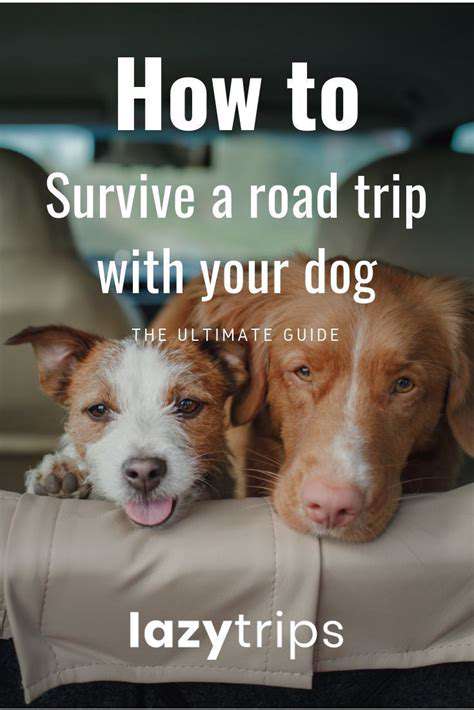How to travel with your dog stress free

Pre-Trip Vet Check
One of the most important things you can do before traveling with your dog is to visit the vet. This check-up helps catch any health problems that could get worse during travel. Your vet can also update vaccinations and prescribe medications if needed. I always make this appointment at least two weeks before my trip to allow time for any follow-ups.
During our last visit, my vet suggested bringing my dog's favorite blanket to help with anxiety. She explained how familiar scents can calm dogs in new environments. We also talked about motion sickness remedies since my golden retriever sometimes gets queasy in the car.
Packing Essentials
When packing for my dog, I create a checklist to ensure I don't forget anything important. I've learned that bringing familiar items like their worn t-shirt or favorite chew toy makes hotels feel more like home. For food, I pack extra in case of delays - about 25% more than I think we'll need. A collapsible water bowl has been a game-changer for road trips.
Last summer, I forgot the vaccination records and nearly couldn't check into our pet-friendly cabin. Now I keep digital copies on my phone and printed versions in the glove compartment. I also include a basic pet first-aid kit with bandages and antiseptic wipes.
Choosing the Right Transportation
How you travel makes a huge difference in your dog's comfort. For car trips, I use a crash-tested harness that clips into the seatbelt. On our last cross-country drive, we stopped every 2-3 hours for potty breaks and short walks. This kept my dog from getting restless and helped prevent accidents in the car.
When we flew to visit family, I called the airline three times to confirm their pet policy. Each representative gave slightly different information, so I asked for email confirmation. I also measured my dog's carrier multiple times to ensure it met size requirements.
Addressing Travel Anxiety
My neighbor's dog howls nonstop in the car, while mine just pants heavily. I've found that playing classical music at low volume and cracking the windows slightly helps my dog relax. We practice short drives to fun destinations like the dog park to build positive associations.
For particularly stressful trips, our vet recommended a natural calming supplement. We tested it before travel day to check for any adverse reactions. I also pack an old towel that smells like home to line the carrier.
Preparing the Travel Destination
Before booking accommodations, I always ask specific questions: Are there weight restrictions? Is there an additional pet fee? I once arrived at a pet-friendly hotel to find they only allowed dogs under 20 pounds. Now I request written confirmation of their pet policy.
At our destination, I do a safety sweep for hazards like loose wires or toxic plants. I bring a collapsible playpen to create a safe space in unfamiliar rooms. If we're visiting friends, I ask them to remove breakable items from tail-wagging height.
Understanding Your Dog's Needs
After five years of traveling with my rescue dog, I've learned his unique tells. The way he licks his lips tells me he's getting anxious before the whining starts. I keep a travel journal noting what works - peanut butter stuffed Kongs keep him occupied for hours, while chew bones just make him thirsty.
Every dog handles travel differently. My sister's puggle sleeps through flights, while my friend's shepherd mix needs medication for even short car rides. Pay attention to your dog's specific reactions and plan accordingly.
Select wood furniture based on type, durability, and aesthetics for lasting appeal.

- Dog gastrointestinal health: Prevention and care
- How to prevent conjunctivitis in your dog
- How to help your dog interact well with other pets
- How to protect your dog’s paws on hot pavements
- How to care for dogs during snow season
- Allergy symptoms to watch for in dogs during spring
- Effective strategies to curb dog digging habits
- How to train a dog to walk on a leash without pulling
- How to teach your dog to swim safely
- Signs of stomach upset in dogs and what to do
- Preventing hip problems in large breed dogs
- How to deal with poisoning in dogs from household items